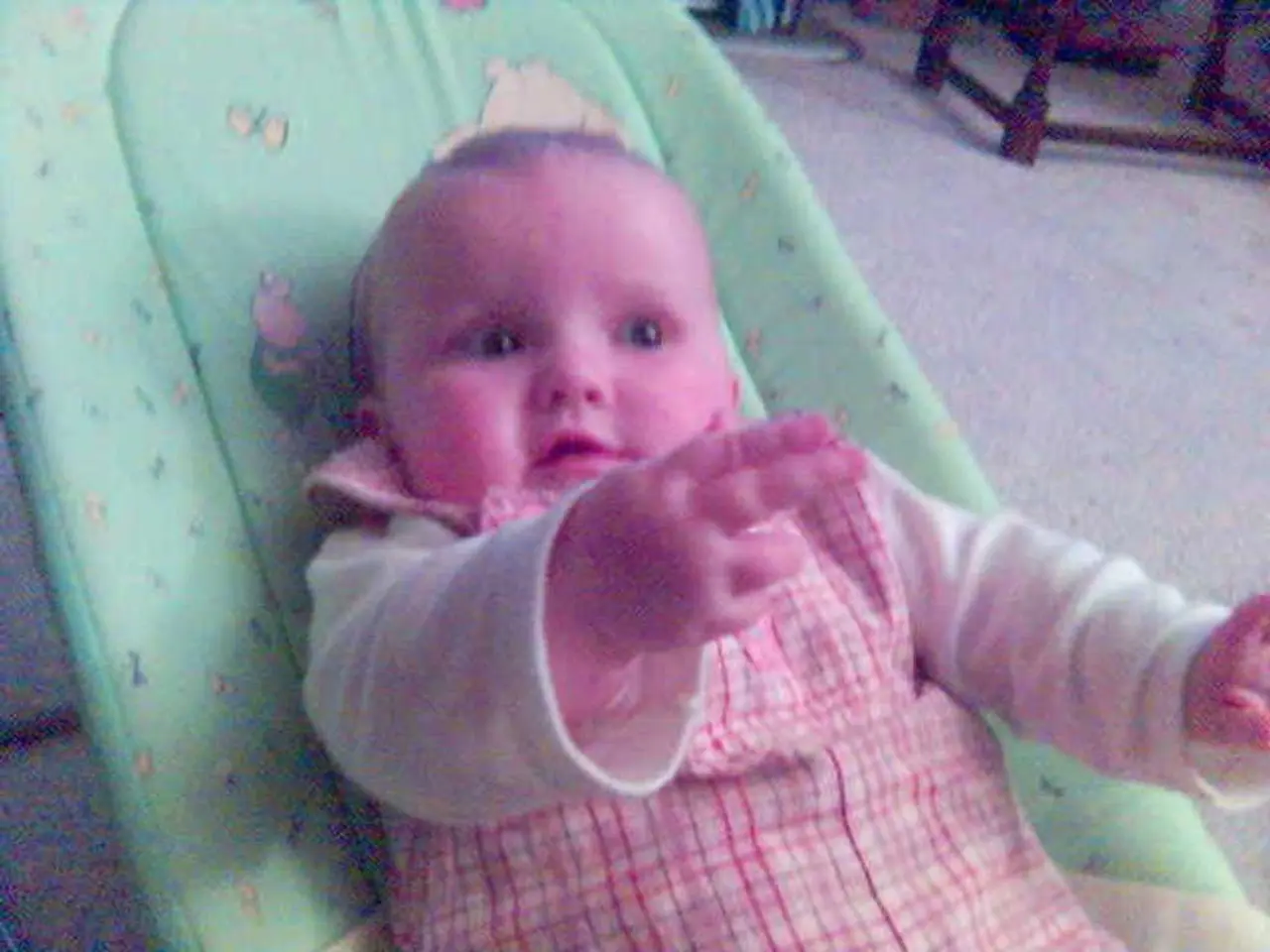"1994 Embryo Breakthrough: Newborn Boy Arrives, Setting Record as Oldest Frozen Embryo Birth"
In a remarkable turn of events, an Ohio couple, Lindsey and Tim Pierce, recently welcomed a baby boy into their family. The baby was born from an embryo that had been frozen for an astounding 31 years, making it the longest known interval before a birth from a frozen embryo to date.
The embryo in question was part of a process called embryo adoption. It was donated by Linda Archerd, who turned to IVF in 1994 and wound up with four embryos. After the birth of her daughter and a divorce, Archerd faced challenges in using the remaining embryos due to rising storage fees and guilt about their future.
The embryo was shipped from Oregon to Archerd's doctor in Tennessee, where it was stored at Rejoice Fertility in Knoxville. This clinic, known for handling embryos stored in outdated and older containers, refused to discard the frozen embryos.
Lindsey and Tim Pierce received three donated embryos from Archerd, of which two successfully implanted in Lindsey. The embryo that was transferred to her was frozen for approximately 31 years.
The Pierce's son was born on Saturday and his birth is believed to set a record for the longest storage time before a birth. In a statement, Lindsey and Tim Pierce expressed gratitude for the clinic's support.
The viability of embryos frozen with older technology illustrates that long-term cryostorage can remain effective when conditions are carefully maintained. This case surpasses previous records such as twins born in 2022 from embryos frozen in 1992.
While medically embryos can remain viable for at least 30 years or more, actual storage duration depends on legal regulations and clinic policies. For example, Australia limits embryo freezing to 5 years, while the UK allows up to 55 years. In the US, embryos can be stored indefinitely, although many clinics may refuse to store embryos beyond some unspecified time.
This milestone is exceptional but demonstrates that extended embryo storage can lead to successful live births. Linda Archerd, who donated her embryos to the Pierces, has expressed relief, sadness, and a little anxiety about the future, including possibly meeting the Pierces and the baby in person. She has also expressed hope that the Pierces will send pictures of the baby.
It is estimated that there are 1.5 million frozen embryos currently being stored throughout the country. The case of the Pierce family serves as a reminder of the potential and the challenges associated with this technology.
A 2024 Alabama Supreme Court decision declared that frozen embryos have the legal status of children. However, questions linger about the fate of remaining embryos, as many are in limbo as parents grapple with what to do with their leftover embryos created in IVF labs.
Dr. John David Gordon, the doctor who oversaw the transfer of the nearly 31-year-old embryo, marked the longest-frozen embryo to result in a live birth, according to his clinic. This milestone is a testament to the advancements in medical technology and the hope it brings to families facing infertility.
[1] Embryo frozen in 1994 results in birth in 2025 [2] Longest-known interval between freezing and birth of an embryo [3] Baby born from frozen embryo more than 30 years old [4] Alabama Supreme Court declares frozen embryos have legal status of children [5] The ethics and challenges of long-term embryo storage
- The baby boy born to Lindsey and Tim Pierce in 2025 resulted from an embryo that was initially frozen in 1994, setting a new record for the longest known interval between freezing and birth.
- The Pierce family's successful birth of a baby from an embryo that was over 30 years old in 2025 demonstrates the potential of long-term embryo storage and the ethical and legal issues that continue to surround it.




